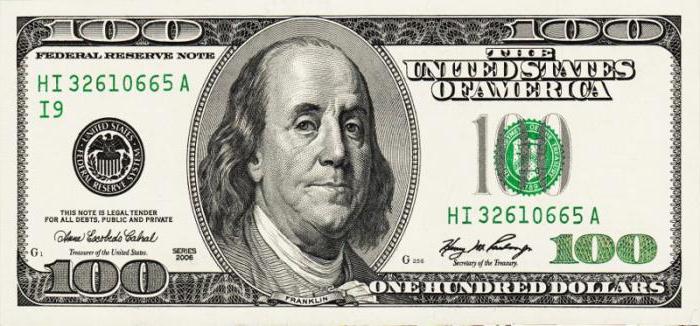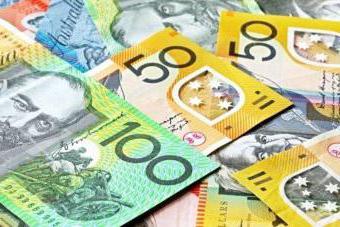There is less and less cash in our wallet, but this is not due to a deterioration in the standard of living. The fact is that paper money is a thing of the past, giving way to plastic cards. Let's remember where and when the first banknotes appeared.
China
The appearance of paper money in Europe learned thanks to Marco Polo. The famous traveler after his wanderings in Asia (XIII century) spoke about the fact that in China banknotes are issued from the bark of a mulberry tree with an imperial print of bright red color.
The first paper money had its advantages. For example, they simplified tax collection and transportation compared to heavy coins. The introduction of banknotes took place in several stages. To support the new currency, in 1273 the Chinese government made payments only in paper money. All silver and gold were exchanged among the population without fail, and even foreign merchants were obliged to surrender their wealth and receive government banknotes in return.
Interestingly, the Chinese still abandoned the new paper money system. The return occurred only at the beginning of the XX century, when the economic colonization of the Middle Kingdom began.
Introducing Hyperinflation
Banknote predecessors in the West are considered debt receipts which did not have independent value. Papers testified to the presence of a certain amount of money available to receive at the issuing bank. The issuance of a large number of coins was not always affordable for the state, especially after protracted wars, therefore such receipts could provide information on solvency.
In Europe, the first paper money appeared in 1661. The founder of the Stockholm Bank, Johann Palmstruch, proposed the creation of a monetary unit. Banknotes printed too much, which led to their depreciation and hyperinflation. Due to his bad experience, Palmstrukh ended up in jail.
Russian empire
Paper money of Russia was introduced under Catherine II. Payment orders, or bank notes, were issued in denominations of 100, 75, 50 and 25 rubles, and the banks established by the empress exchanged them for the corresponding amount with silver.
The process of acquaintance of the population with new monetary units was rather difficult due to distrust and a large number of fakes from "craftsmen". The situation changed due to the silver ruble, to which in the middle of the 19th century the value of paper money was tied. In addition, watermarks began to be applied to black and white banknotes, which slightly reduced the interest of scammers.
The official version of the emergence of new means of payment was considered the reduction in the cost of their release. In fact, the wise ruler decided in this way the question of replenishing the treasury for the preparation of the Russian-Turkish war.
The appearance of bank notes has been constantly changing. New protection elements and individual numbers appeared, and portraits of emperors were used as decoration.
Kankrin Reform
The silver ruble, which was declared the main coin after the first stage of the monetary reform in 1839, replaced the banknotes. Banknotes, in turn, went by the wayside. According to the plan of the Minister of Finance, E.F. Kankrin, a constant course has been set in relation to bank notes in order to gradually withdraw them from circulation.
However, paper money did not disappear at all. The government established the Deposit Office, which accepted a coin for deposits - deposit tickets were issued in return.
At the second stage of Kankrin's reform, credit tickets were issued in connection with economic necessity.Thus, after 1841, there were three types of banknotes in circulation, and after two years only credit tickets remained.
Sustainable monetary circulation created through reform was undermined by the Crimean War. The uncontrolled issue of credit tickets led to the cessation of their free exchange for gold and silver.
Before the revolution
Russia continued to issue paper money, and by 1861 their amount exceeded the state budget profit several times. A year later, the government recorded a 1: 1 exchange rate against the ruble to silver. However, the exchange process was stopped due to hype among the population.
Nicholas II, who ascended the throne, had to urgently put in order the financial system, so some innovations were adopted regarding credit tickets:
- Snap to gold.
- Numbering.
- Quality paper and advanced manufacturing techniques.
- Signatures of managing banks.
- New denominations.
The events that took place after 1914 are well known to us. First, the country entered the First World War, then the revolution and the abdication of the emperor from the throne - all this could not but affect the financial situation in the country. The interim government needed more money, and the uncontrolled issue of credit tickets led to their depreciation.
Tsarist paper money was in circulation until January 1, 1923.
the USSR
The lack of cash in the mid-20s led to the release of new banknotes in denominations of 5, 3 and 1 ruble. The paper money of the USSR contained inscriptions in the six languages of the republics that make up the state.
Banknotes were distinguished by complex ornaments and images consistent with ideology. For example, a portrait of a worker was applied to the rubles of 1925, and in 1937-1938, a pilot, a Red Army soldier and a miner appeared on banknotes.
The next monetary reform took place in 1947. First of all, the government abolished the card system for the supply of industrial and food products. When exchanging for one new ruble, they gave ten old ones, but the population was not informed about the reform. Money supply, according to experts, decreased at least three times.
1961 reform
To improve the monetary system in 1958, the government again discussed monetary reform, but, unlike the previous time, the population was informed in advance. After the signing of the resolution on May 4, 1960, the inflow of deposits to savings banks increased sharply in the country, and the revenue of stores selling furs and jewelry jumped several times.
New banknotes began to be issued on January 1, 1960, while the exchange process was launched. Due to the large number of points, two months later, old paper money was withdrawn by 90%.
The one ruble banknote, on which only a geometric ornament was applied, became the simplest in design. The three-ruble note was decorated with a panorama of the Kremlin, and the five-ruble note was decorated with the Spasskaya Tower. On large banknotes a portrait of Lenin and an additional image were printed. For example, a bill of 100 rubles contained one of the Kremlin towers and cathedrals in the background, and a bill of 50 rubles contained the Kremlin Palace.
End of an era
By the time of the collapse of the Soviet Union in 1991, none of the republics provided for the issuance of their own signs, so paper money of the USSR was in circulation for several years.
In 1993, a reform was carried out in the Russian Federation, new banknotes were issued, which did not have fundamental differences from the Soviet ones.
In 1997, the government announced a denomination. During the exchange, the population received banknotes with a face value of a thousand times less. We still use these banknotes. Further updates concerned only additional security elements (microperforation, metallized strips and luminescent patterns).
Only in 2014 did they make an exception in honor of the Sochi Olympics.The new banknote, 100 rubles, dedicated to sports competitions, was decorated with a fabulous firebird and the Fisht stadium on the reverse, and on the front side with a snowboarder in flight.
USA
In other countries, there were also many metamorphoses with the national currency, although some still managed to avoid this. In the United States of America, banknotes issued since 1861 are legal tender.
The largest banknote in circulation is considered a 100 dollar bill, but you can meet valid banknotes of other denominations (500, 1000, 5000 and even 10,000), which were issued before 1945. Their cost at auctions is two to three times higher than the indicated face value. 
Watermark
Since the introduction of banknotes, the question arose about the need for their protection from fraudsters. Antique paper money was constantly trying to fake, and one of the first obstacles was the appearance of a watermark. These are light and dark images visible in the light.
Today, no banknote can do without this element of protection. Depending on the location, the watermark may be:
- local (located in a specific place);
- general (pattern repeating over the entire area of the banknote).
The element is obtained by pressing a special roller in the papermaking process.
Vivid examples
According to statistics, in our country 1000 rubles are most often falsified. A watermark in the form of the upper part of the monument to Yaroslav the Wise is located on the coupon field, next is another filigree watermark indicating the face value. It is distinguished by a combination of light areas with dark strokes that create the effect of a three-dimensional image.
In the US, the most common is a 100 dollar bill. In circulation there are banknotes of 1996-2009 of release. The front side depicts Benjamin Franklin, and the reverse - Independence Hall. To the right of the Treasury seal on a white background is a watermark repeating the portrait of the president.
Other security features
Over the years, not only the counterfeiters' abilities have improved, but also new security features have been developed.
- Microprinting. Represents images that are visible when magnified multiple times. This can be a micro-clog (geometric elements or a pattern of thin lines) and microtext. Microprint bills are easy to distinguish if photocopied.
- Security thread. At the initial stage of manufacturing a paper web, a strip of polymer material is introduced into the structure. A solid thread is visible in transmitted light. Recently, the most widespread diving thread. Sections that appear on the surface of the paper may have luminescent or magnetic properties, contain any text.
- Kipp effect (latent image). It is detected when viewed from a certain angle. An element is performed only by metallographic printing.
- Ovi paint. Another innovative element that protects paper money (rubles). Images have a metallic luster; they change color when the angle of illumination changes. OVI-paint is produced by only one company from Switzerland using a very expensive and complex technology, so it is almost impossible to fake these elements.
- Microperforation. An image created using multiple through-holes.
In addition, to protect banknotes use:
- foil stamping;
- metallic paint;
- shadow image;
- luminescence;
- hologram;
- colorless embossing;
- Kinegram;
- matching images.
“Plastic” money
Paper money is easy to tear, wrinkle or stain, so the state has to think about the timely withdrawal of shabby banknotes from circulation. Despite the addition of synthetic fibers, their wear resistance cannot be compared with samples of polymeric materials.
In addition to durability, polymer money has other advantages.For example, banknotes do not absorb moisture and dirt, and the process of production and processing is greatly simplified.
Today, polymer banknotes are issued in nine countries (Vietnam, Australia, Canada, New Zealand, Romania, Brunei, Papua New Guinea, Maldives, Vanuatu) and circulate on a par with paper money from previous issues.
In some countries, only a part of banknotes is produced from polymeric materials (Israel, Dominican Republic, Singapore, Mexico, Bangladesh and others).
Hybrid banknotes
At first glance, the degree of protection of “plastic” banknotes is quite high, and only one company produces materials for them. However, in practice, it turned out that for counterfeiters there are no barriers. After the introduction of new banknotes in Romania and Mexico, the number of high-quality counterfeits increased.
Another option is hybrid banknotes. Such bills are made on a paper basis with the addition of elements from polymeric materials. For example, a commemorative banknote of 100 rubles, issued in honor of the Olympic Games in Sochi, is equipped with a polymer ribbon with a transparent insert on which snowflakes are visible.








